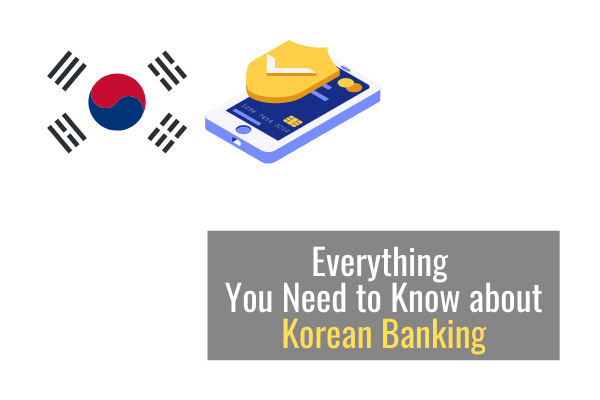
This post will walk you through the Korean bank account application process step-by-step.
It covers:
- What the new requirements and terms are
- Where to apply
- Which tax forms to file
- How to set up Corporate Banking
- and more!
I’ve had Korean bank accounts since 2006 for both personal and business use.
Let’s dive right in!
The easiest way to open a Korean bank account as an expat
- Get your documents ready – passport, ARC and Korean phone number
- Visit the bank – you need to open an account in person
- Get your items – you’ll receive a bank card, security card, passbook and create your pin number
*** Disclaimer ***
The information in this post is valid as of Feb 2021. Korean bank account requirements and benefits change frequently. Check with your favorite bank teller to get the most up to date and accurate info. Terms may vary by bank branch.
Opening a bank account in Korea used to be easy. You only needed a few documents to get one. Now, they’ve added a few requirements to stop the use of fake bankbooks for voice phishing.
Read on to find out how to open up a Korean bank account.
What do I need to open up a Korean bank account?
Now, the general requirements are:
1. Passport and ARC (여권/외국인등록증)
2. If you’re employed, you need to present proof of employment (재직증명서) to open a bank account for direct deposit of paychecks.
3. If your spouse is Korean, you may need to bring your Certificate of Family Relations (가족관계증명서) or Resident Registration (주민등록등본). (You can skip this part if your spouse comes with you.)
4. 1,000 won cash to deposit (this depends on the bank, but it’s good to be prepared)
5. 30,000 won to add a public transportation function (like T-Money) to your debit card.
6. It’s a good idea to come up with a reason for opening a bank account in advance.
If a bank teller asks why you need an account and your answer is “just because”, they may reject your application.
Your reason can be anything including:
- “I need to send/receive money to/from my family overseas”
- “I need to receive salary from my company”
Just make sure to bring proof.
Where can I open up a Korean bank account?
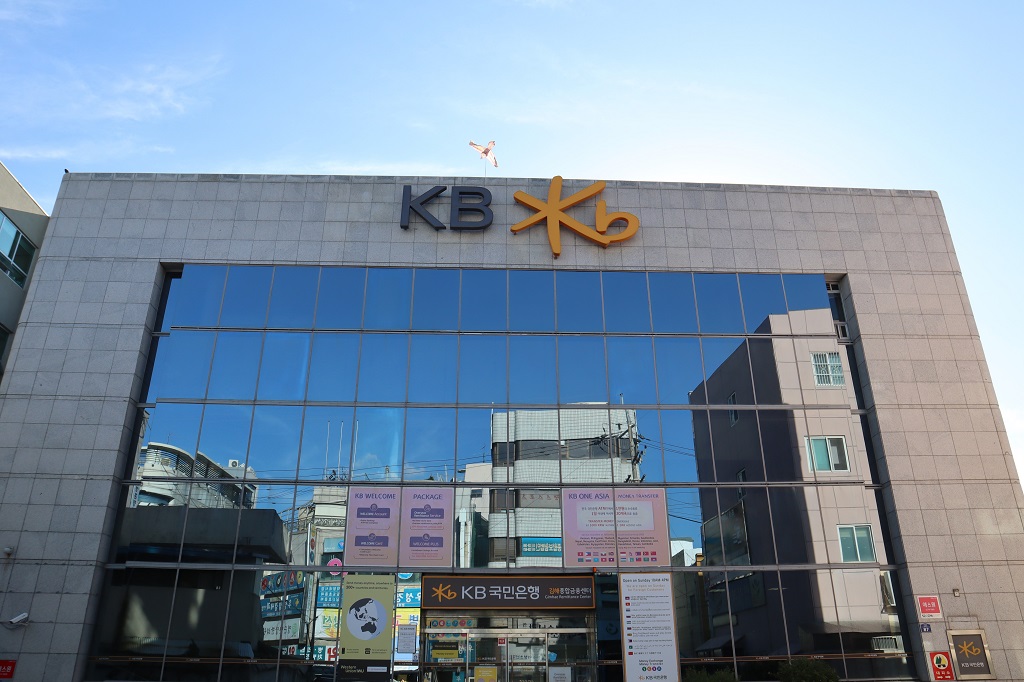
You can open a bank account at any bank in South Korea.
What’s the best Korean bank for expats?
KEB was once considered a leading choice until around 2015 when they merged with Hana Bank. They’ve since closed many branches and limited in-bank services like check card issuance (you have to call to order one).
Now, most banks offer services in English and are catering more to foreigners.
Shinhan bank has a good reputation for being foreign-friendly and has online/mobile banking in English.
Citibank Korea is also a great choice even though they’re different from Citibank USA. If you have a Citibank account in the U.S., you can transfer money between accounts easily.
It can also be a good idea to choose the same bank your employer uses to avoid fees.
Other good banks are:
- Kookmin
- Nonghyup
- Woori

Essential banking terms in Korean
- Bank – 은행
- Account – 계좌
- Account number – 계좌 번호
- Routing number – 라우팅 번호
- Debit card – 직불 카드
- Cash card – 현금 인출 용 카드
- Alien registration card – 외국인등록증
- Bank statement – 은행 명세서
- Bankbook/passbook – 통장
- Fees – 수수료
- Bank transaction – 은행 거래
- Foreign exchange bank – 외환 은행
- South Korean central bank – 한국 중앙 은행
Must-know tips for banking in Korea
- Stay with the same bank. You’ll get more benefits like higher credit limits and even priority service.
- Many Korean websites and apps only accept Korean bank cards.
- Don’t accept an account with fees. Most banks don’t charge monthly or annual fees, because Korean customers don’t tolerate it.
- You can call an English customer service hotline at most banks if your teller doesn’t speak English.
- You need to specifically request a bank card that works at overseas ATMs and websites.
- Make sure to use a Global ATM when withdrawing money overseas with a Korean bank card.
- You can ask for transportation functions (후불교통) added to your bank card so you can use it on subways, buses and taxis without a separate T-Money card.
- Make sure to set up an internet banking ID, so you can do your banking online.
- Some banks don’t allow you to withdraw money at certain times due to maintenance reasons.
- There’s a 50,000 USD a year limit on overseas remittance. This is partially because of the IMF crisis of the 90s. You can’t withdraw more than 10,000 USD at a time as well.
- Banking hours are usually 9am to 4pm on weekdays. Banks are normally closed on weekends.
- Actions that require a teller might take time since many older people prefer to do things in person, so try to do things online when possible.
- Go to a bank branch in an area that has a high concentration of people from your country. You’re more likely to get a teller who speaks your language. For example, any of the branches in Itaewon will have English and other language speakers.
- You may have additional tax filing requirements depending on your nationality. For example, U.S. citizens with a Korean bank account over 10,000 USD need to fill out more forms.
What to know as a U.S citizen with a Korean bank account
U.S. citizens have stricter asset reporting requirements thanks to FBAR and FACTA, which were created to help the IRS stop tax evasion.
A bank account or combined balance of multiple accounts over 10,000 USD at any time during the year must be reported to the U.S. Treasury Dept.
File FinCen form 114
The penalty for not doing so can be 10,000 USD. The filing deadline is June 30 with no extensions available. There are ways to catch up on late filings without penalties through FinCen.
Total value of assets (including pensions, stockholdings, foreign partnership interests and bank accounts) $200,000 or more at the end of the tax year, or $300,000 at any point during the year must be reported to the IRS.
Married filers have a $400,000 threshold, or $600,000 at any point during the year.
File form 8938
The penalty for not doing so can be 10,000 USD.
What it’s like to bank in Korea
I opened up a bank account in 2006 at KEB since my first employer used that bank. I only needed a passport, local phone number and 10,000 KRW to start.
More about Life in South Korea as an Expat
Online banking has always been interesting to use. On the one hand, online banking developed in South Korea (since 1999) quicker than it did in most countries.
On the other hand, the requirement of ActiveX and other software that worked more like Malware made things trickier. You also needed a digital certificate with a password and other seemingly random passwords at times. Something simple like shopping online overseas could take an hour.
Thankfully, banking apps removed the need for digital certificates and made transactions easier.
Sending money overseas takes some time and requires a visit in person to set up a designated foreign bank.
I currently have a personal and business account at a Korean bank. For the most part, Korean banking has been secure and easy to use.
How to open a Korean bank account as an Expat
Step 1. Gather your documents
Make sure to have your passport, ARC (외국인 등록 카드) and a Korean phone number (한국내 전화번호). You may also be asked to provide a certificate of employment (재직증명서) if you have a job or university documents if you’re a student.
Step 2. Find the right bank
Choose the bank you want to apply at. Most banks have services in English. It’s a good idea to choose the bank your employer uses, because you can save money on transaction fees.
Step 3. Go to the bank
You need to open an account in person. Tell the individual at the front who looks like a security guard/greeter what you’re there for and they’ll direct you to the right forms. Fill them out and wait your turn to see a teller.
It’s possible to get rejected for reasons outside of your control. Try another branch if this happens.
Step 4. Get everything
You’ll receive a bank card, security card and passbook. You can create your four-digit pin number at the bank as well.
Make sure to set up an internet banking ID too. Staff can help you with this part.
Step 5. Set up your bank
Once you get home, you’ll need to create a digital certificate with a password if you want to bank online. The first one should be free, but it can cost money to renew them.
Security cards are unique because they contain numbers you need to input when wiring money.
If you prefer a more secured way to transfer money, you can ask for an OTP (a digital security card that generates a one-time password), but this will cost you about 5,000 to 10,000 won unless you’re a loyal customer of the bank (in other words, it’s up to the teller’s discretion). Also, you cannot change the battery in an OTP (one-time password), so once it’s dead, you need to visit the branch to get a new one.
Passbooks aren’t as useful anymore, but it’s a good idea to have them just in case you need to send a copy to an employer.
Store your security card and passbook in a safe place. It’s hard to get things done without them.
How to open a corporate bank account in South Korea
The process is similar to opening a personal account. The main differences are:
- You need to bring your business registration (사업자등록증)
- Account services will differ slightly from those of personal accounts. (For example, corporate bank accounts with KEB Hana offer a separate website for making salary payments or business transactions like managing letters of credit (신용장).
- You should receive an OTP

Background info
Hanseong Bank was the first commercial bank in Korea in 1897. It’s known today as Shinhan Bank.
Bank of Korea (BOK, 한국은행/韓國銀行) was formed as South Korea’s central bank in 1950. It was established to promote price stability through efficient monetary credit policies.
The Korean financial system nearly collapsed in the 1990’s after banks borrowed too much overseas to boost industrialization by conglomerates. Korean banks had to restructure the debt and set up a bailout agreement with the IMF. There’s a moving story of how 3.5 million Koreans donated their gold jewelry to help repay the debt.
Korea developed online banking early in 1992 with widespread adoption in 1999. Nevertheless, banking management has traditionally been top down and slow to adapt. Until the creation of Kakao Bank in 2016, you had to use Ahnlab security software from the 1990s for internet banking.
Korean banks don’t usually charge fees for bank accounts. SC First Bank (SC제일은행, now Standard Chartered Bank Korea) tried to in 2001 and stopped after three years when Korean customers strongly opposed. Citibank started again in 2017, but only charge 5,000 won per month for balances less than 10 million won for new account holders.
Korean banks are now in a race to modernize. Especially since the COVID-19 pandemic and the creation of Kakao Bank, the first and largest online bank in South Korea.
Korean banks are both cutting edge and archaic. Koreans have been wiring money domestically for free for 20 years. They can get same day grocery delivery, send gifts through KakaoTalk and call taxis with a credit card. You also need a digital certificate and bank security card for online transactions.
Most Korean websites and apps only accept domestic bank cards.
More about Korean Online Shopping Websites
FAQ
Can I open a Korean bank account as a non-resident?
You can try, but you’ll most likely fail. Opening an account requires a resident card (ARC) and a Korean phone number.
What type of bank accounts are there in Korea?
There are two main categories, personal and corporate. Some banks offer VIP accounts to those with over 50 million KRW deposited.
Within those categories there are:
- long-term savings (장기 저축) – interest rates increase with longer commitments
- time-deposit (정기 예금) – similar to a checking account with low interest rates
- installment savings (적금) – monthly deposits are made which accrued interest until a maturity date
What type of bank cards are there in Korea?
There are three main categories:
- cash cards – can only be used at ATMs to withdraw or deposit money. These are becoming less common.
- credit cards – like in other countries, these can be used to make purchases up to your credit limit. Unlike in other countries, the card limit must be paid off every month.
- debit cards – has the function of a cash card with the ability to make purchases. The amount spent is withdrawn from the account in real-time.
What are bank and ATM hours in Korea?
Most banks open 9am to 4pm, excluding national public holidays and weekends.
All banks have ATMs that are available after closing hours, usually until midnight. Some banks have 24-hour ATMs.
Also, most banks allow you to use their ATMs without fees as long as you have an account with them.
Do Korean bank employees speak English?
Most Koreans can at least understand English, but it’s a less than 100% chance that your bank teller will be fluent in the language. Don’t take it personally if your teller seems hesitant when they see you. It’s not a matter of dislike, but fear of speaking English and making a mistake in front of their coworkers.
At larger branches, there’s usually one employee who’s fluent. To increase the chance that your teller speaks English:
- go to a bank branch in Itaewon or Hongdae
- bring a local friend
- use a translation app
How to send money to Korean bank account from overseas (America or other countries)?
There are many choices including:
- Bank international wire transfer
- Western Union
- Wise
- PayPal
You simply need the bank account and routing number to send money to a Korean bank.
How to send money from Korean bank account to an American bank?
You can choose from the following:
- Bank remittance (wire transfer)
- Western Union
- Sentbe
- PayPal
When using a bank remittance in Korea, it’s important to set up a foreign designated bank. You’ll need an account and routing number to do so.
What restrictions on Korean banking do I have as an expat?
Expats initially have transfer (withdrawal) limits of 300,000 won per ATM visit, and 1 million won accumulated at bank windows.
In order to unlock these limits, you need to deposit monthly salary of 500,000 won or more for 3 months in a row, or set up autopay for 3 utilities for 3 months in a row.
Is my money protected in South Korea?
Yes, by the Depositor Protection Act (예금자 보호법).
The Depositor Protection Act was created to safeguard depositors and maintain the stability of the financial system in case a financial institution suspends business or goes bankrupt.
Even if a financial institution is unable to pay a customer’s deposit due to bankruptcy or other reasons, this system guarantees up to 50 million won per person including principal and interest.
What information is included in a Korean bank passbook or bankbook?
It includes your account info and transaction history. You can have them updated at your local bank branch. They’re becoming less important, but it’s still a good idea to hang onto yours.
How long have Koreans been doing online banking?
Although it originated in 1992, Korea has been providing widespread internet banking since 1999.
Even at the end of 2002, 17,710,000 people registered to use internet banking. The number of internet banking users surpassed 100,000,000 back in 2014.
How much money do I need in my bank account for a student Visa (D-2)?
This will depend on your country of origin, but in general you’ll need to show enough to cover 1-year of tuition and living expenses (around 20,000 USD) in a statement issued within 30 days before your visa application date.
Where can I change my money to Korean won at the bank?
Most banks will accept walk-ins for foreign exchange. Simply enter a bank nearby and tell the person who greets you that you’d like to exchange money into Korean won. They’ll give you a number and tell you where to go.
When is it ideal to transfer money to a Korean bank?
There’s no perfect time, but you can watch the exchange rate from your currency to Korean won and try to do it when the won is weaker.
How much is the fee to transfer money from a Korean bank to an American bank?
There are both transfer and wire fees to take into account which can cost anywhere from 8,000 – 30,000 KRW on both the sending and receiving end.
What are the first and second financial sectors in South Korea?
Korea has 1st and 2nd financial sectors divided according to the functions of extending and receiving credit.
The 1st financial sector includes banks, such as Industrial Bank of Korea, KB Kookmin Bank, Shinhan Bank, Woori Bank and so on.
The 2nd financial sector includes financial institutions such as insurance, securities, asset management companies (savings bank, credit union, etc.), excluding banks.
| Pros (1st) | Cons (1st) |
| Has many branches Offers various financial products Handles different types of transactions at once Provides loans at a relatively low interest rate | Provides lower deposit interest rate than the 2nd financial sector Has demanding loan conditions |
| Pros (2nd) | Cons (2nd) |
| Offers quick and easy loans (fewer demanding conditions than banks) Provides higher deposit interest rates than banks | Provides loans at a high interest rate Has lower stability than the 1st financial sector |
What’s KakaoPay and KakaoBank and are they different?
KakaoPay is a mobile payment system and digital wallet service by Kakao. It’s like Naver Pay, Samsung Pay, Payco or Zero Pay in Korea.
KakaoBank is an actual bank in the 1st financial sector. It’s a solely online bank without offline branches.
You can transfer money without an accredited certificate (공인인증서) or security card (보안카드).
KakaoBank also offers overseas remittance from/to 200 countries through Western Union.
The best part is that there’s no service fee charged when wiring money to other banks or using ATMs in Korea.
Can foreigners get KakaoBank?
Not yet! It takes Koreans only 7 minutes to open a bank account on the KakaoBank app. They’ll even receive a debit card with their favorite Kakao Friends character. Hopefully, others can open up this convenient service in the near future.
Can I open up a securities trading account in South Korea as an expat?
Even trading companies like KIWOOM Securities (키움증권) allow expats to have accounts.
Just bring your Domestic Residence Card (국내거소신고증) or ARC (외국인등록증), which is at least 6 months old, and a copy of a bankbook in your name. Then, you can visit a branch to open an account.
* Non-resident foreigners cannot open an account.
* If it hasn’t been 6 months from ARC issuance date, you need to bring either:
– Certificate of Employment (재직증명서)
– Passport that shows you’ve been in South Korea for six months straight.
Did we miss anything?
Getting a Korean bank account comes with many benefits.
Let us know your Korean bank account tips in the comments below!
Disclosure: There are affiliate links in this article that provide us a small commission at no extra cost to you. We only endorse the best language learning tools we use ourselves. Find out more about our code of ethics.

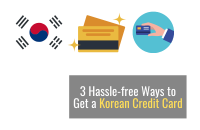
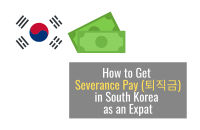
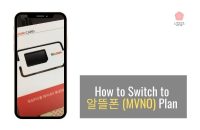
![How to Get Your Stimulus Checks in South Korea [April 2022]](https://linguasia.com/wp-content/uploads/How-to-Get-Your-Stimulus-Check-in-South-Korea-200x130.png)